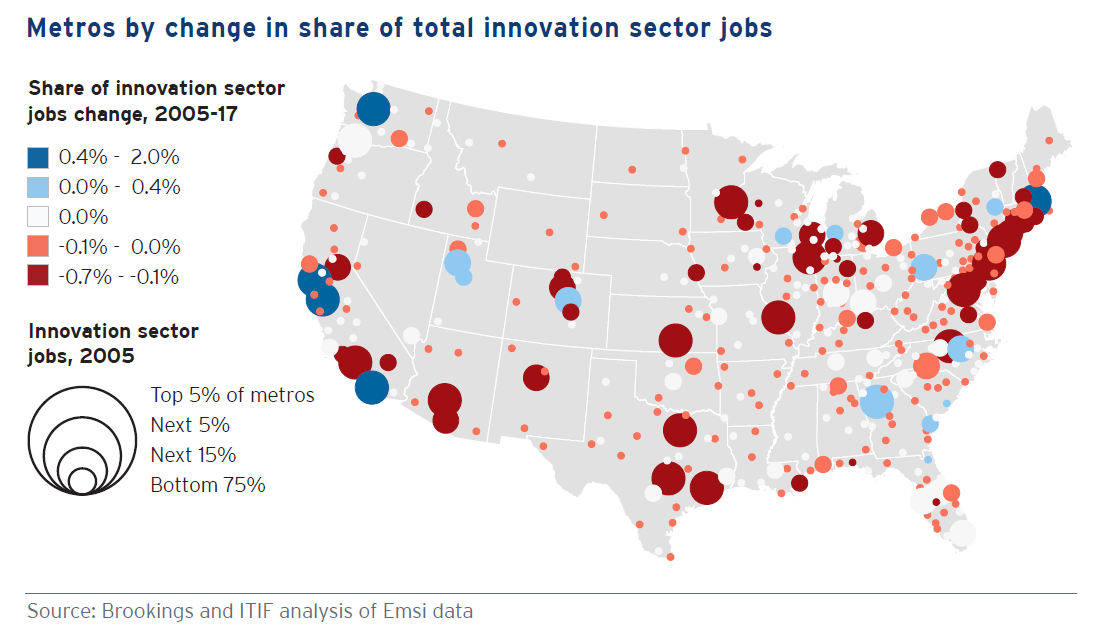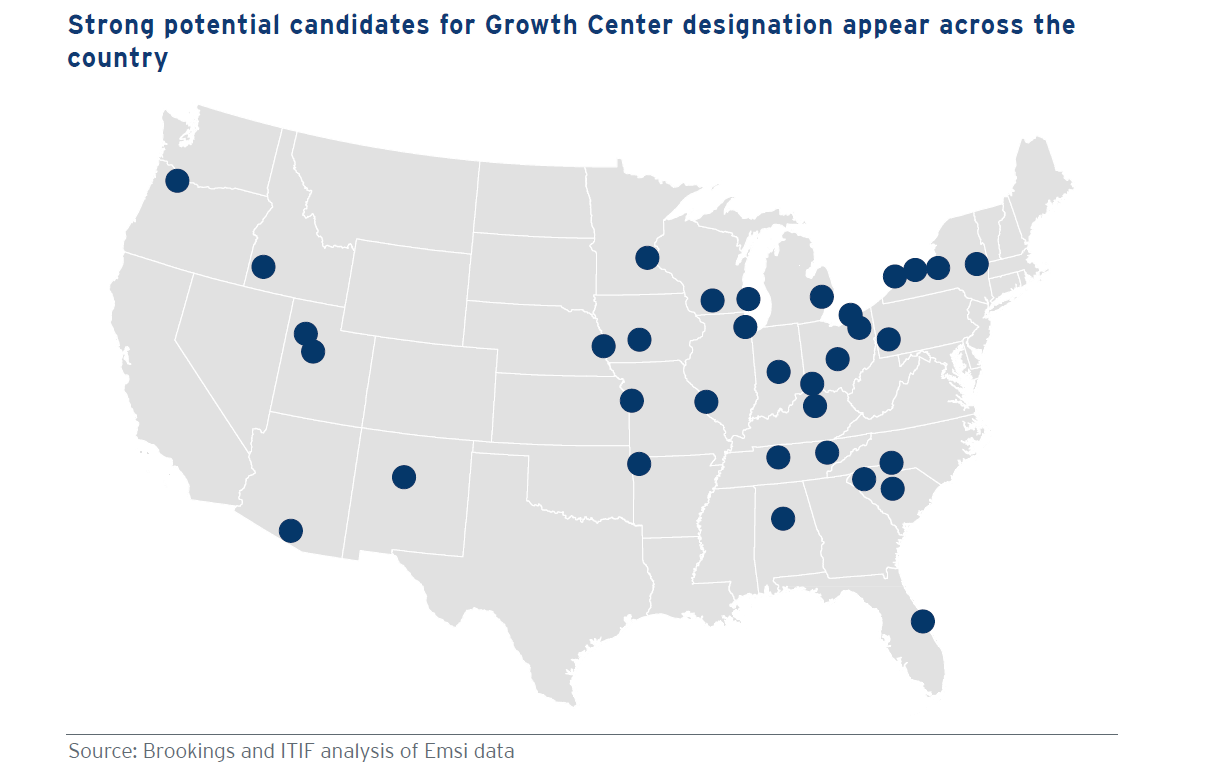Yes! According to a recent report by the Brookings Institute, Tucson has the potential to become one of America’s next dynamic innovation centers. In Brooking’s opinion, the future of America’s economy lies in its high-tech innovation sector. The report “The Case for Growth Centers: How to spread tech innovation across America” explores the widening national gap between high-tech metropolitan areas and everywhere else. Recent data has shown that instead of growing together, the nation’s regions, metropolitan areas, and towns have been growing apart. This is contrary to the tendency towards convergence experienced for much of the 20th century. The report identifies promising metropolitan areas that have the potential to become self-sustaining growth centers.
The report finds that top tech and innovation heavy metropolitan areas such as Boston, San Francisco and Seattle have been consistently outperforming less-tech-based places on measure of innovation-driven prosperity resulting in a regional imbalance. Brookings suggests that it is time to invest in promising growth (Figure 1).
Figure 1: Metros by change in share of total innovation sector jobs
The report’s findings are as follows: Regional divergence has reached extreme levels in the U.S. innovation sector, for example more than half of the nation’s innovation jobs are concentrated in just 41 counties. They also found that high levels of territorial polarization are a grave national problem, further suggesting that these problems range from increasing home prices and traffic gridlock in high-tech regions, to “sorting” of workers with college-educated workers clustering in high-tech areas. The report concludes that markets alone won’t solve the problem – “place-based” interventions will be essential.
Brookings suggests that the nation should counter regional divergence by creating eight to 10 new regional “growth centers” across the country. They think numerous metropolitan areas, including Tucson, have the potential to become one of America’s next dynamic innovation centers (Figure 2).
Figure 2: Strong potential candidates for growth center designation appear across the country
Brookings assessed 382 metropolitan areas by creating an eligibility index based on metro scale, regional innovation capacity, and the skill base of the local labor force to determine their potential as a growth center. Specific indicators included population, STEM R&D spending by local universities, patent activity, employment in innovation industries, the share of adults with a Bachelor’s degree or higher, and the rate of STEM doctoral degrees granted by universities within the metro area.
Excluded from their analysis were mega-regions with more than 10 million people, the top 20 metros with the most innovative sector jobs that saw population or real GDP (Gross Domestic Product) growth faster than the nation, and any viable metro area within 100 miles of an existing innovation center.
Of the 35 potential growth centers identified by Brookings, Tucson was eighth with an eligibility index of 0.45. Tucson did relatively well on STEM R&D spending by local universities, patent activity, employment in innovation industries, and the rate of STEM doctoral degrees granted. Tucson did less well in the share of adults with a Bachelor’s degree or higher. To see the full list of potential growth centers view Table 2 in the full report.
The report provides a detailed analysis of the existing strengths that each potential growth center brings to the table. To read the full report and detailed analysis visit the Brookings report on The Case for Growth Centers: How to spread tech innovation across America.














